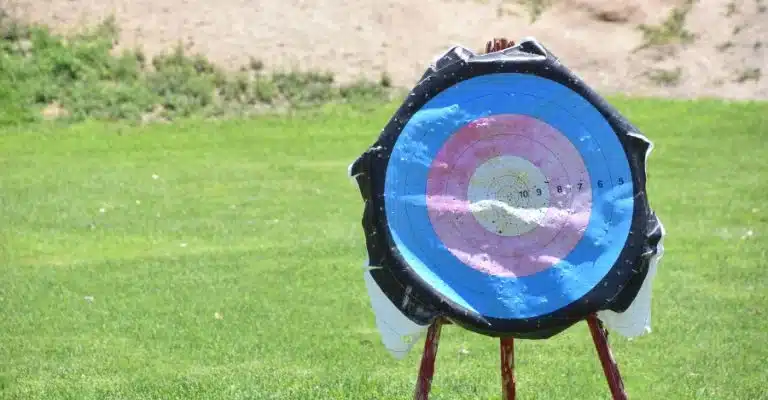Perfecting Precision: Techniques for Improving Dartboard Accuracy
Improve your dartboard accuracy with expert techniques and tips. Learn how to hit specific areas consistently and enhance your game with our comprehensive guide!
What is the Techniques for Improving Dartboard Accuracy
Fundamentals
- Stance:
- Find a comfortable and stable stance. Sideways to the board with your dominant foot forward is common.
- Weight distribution slightly forward, but avoid leaning too much.
- Keep your body still and minimize unnecessary movement.
- Grip:
- Experiment with different grips to find one that delivers a comfortable, consistent release.
- Use a light grip – you don’t need to squeeze the dart tightly.
- Throw:
- Smooth, controlled motion focused on your forearm and wrist.
- Minimize shoulder and upper arm movement, keeping your elbow relatively steady.
- Follow-Through:
- Keep your throwing arm extended towards your target after release. This helps maintain a straight trajectory.
Focus and Targeting
- Aim Small: Pick a precise spot on the board rather than a general area (e.g., aim for a specific wire within the triple 20).
- Mental Focus: Clear your mind of distractions and visualize the dart landing in your target area.
Practice and Refinement
- Consistent Practice: Regular practice is key to developing muscle memory and refining technique.
- Purposeful Training: Don’t just throw; drill specific targets and aspects of your throw.
- Analyze Your Technique: Record your throws or practice with a partner to identify areas needing improvement.
Additional Tips
- Equipment: Find darts of the correct weight and style for you. Experiment with different shaft and flight setups as these can subtly affect trajectory.
- Warm-Up: Throw a few easy darts to loosen up and get into a rhythm before starting a serious practice session or match.
- Match the Board: Lighting and how well you see the wires can heavily influence your accuracy.

What is the best Dart Weight?
- Beginners: Start with darts in the 22-24 gram range. They offer enough stability and control while you develop your technique.
- Intermediate/Advanced: You have more freedom to experiment. Consider your throw:
- Hard Throwers: Might prefer heavier darts (24-26 grams) to better harness their power.
- Soft Throwers: May find lighter darts (20-22 grams) easier to control and more accurate.
- Heavier isn’t always better: Don’t focus solely on weight. A dart you feel comfortable with is more important than a higher gram number.
Dart Styles
- Barrel Material:
- Brass: Affordable, mainly for beginners. Less dense, requiring thicker barrels.
- Nickel/Silver: Mid-range price, better grip and feel overall.
- Tungsten: Most popular due to the high density. Allows for slimmer barrels, potentially improving grouping. Increased cost.
- Barrel Shapes:
- Straight: Even weight distribution. A good starting point.
- Front-weighted: Weight towards the front for those who grip there, might help with a straight flight path.
- Rear-weighted: Less common in modern darts, weight at the back for a more ‘loopy’ trajectory if that matches your throwing style.
- Grip:
- Smooth: Minimal added grip.
- Ringed: Distinct ringed sections provide grip points.
- Knurled: Textured surface for enhanced grip.
- Shark Grip: Aggressive, angled cuts for maximum grip
[wps_alert type=”primary”]Remember, darts is a skill. Consistent practice and attention to the fundamentals will lead to massive improvements in your accuracy.[/wps_alert]
Dartboards: A Personal Perspective
As a seasoned dart enthusiast, let me take you on a journey into the world of dartboards, those iconic fixtures of countless game rooms and bars.
What is a Dartboard?
- A dartboard is the focal point of the beloved game of darts, a game that combines precision, skill, and a bit of luck.
- It’s a circular board divided into numbered segments that players aim to hit with darts, scoring points based on where their darts land. Check out Dart Board: A Comprehensive Guide.
What are the Different Parts of a Dartboard?
Understanding the anatomy of a dartboard is crucial for mastering the game:
- Bullseye:
- The central target, consisting of two concentric circles.
- The inner circle, known as the “bullseye” or “double,” awards the highest points.
- The outer circle, called the “outer bull” or “single,” grants fewer points.
- Numbered Segments:
- Surrounding the bullseye are numbered segments, ranging from 1 to 20.
- Each segment has its own score value, indicated by numbers and colors.
- Wires:
- Thin metal wires separate the segments and determine scoring accuracy.
- These wires are essential for defining each segment and ensuring fair play.
- Outer Ring:
- The outermost ring, also known as the “double ring,” doubles the points scored when a dart lands within it.
- Inner Ring:
- Adjacent to the outer ring is the “triple ring,” tripling the points scored if a dart lands within it. For more about Types of Dart Boards.
What Materials are Dartboards Typically Made of?
Dartboards are crafted from durable materials, ensuring longevity and consistent performance:
| Material | Description |
|---|---|
| Bristle | The most common material for professional dartboards. Made from sisal fibers compressed into a dense surface. Offers self-healing properties, allowing the board to retain its shape and integrity after dart impacts. |
| Electronic | Increasing in popularity for casual players and home setups. Typically made from plastic or composite materials with electronic sensors to register dart impacts and calculate scores. |
| Cork | An older but less common material. Made from compressed cork, these boards are less durable and prone to damage from repeated dart strikes. Often used for recreational play. |
Exploring Dartboard Scoring Areas
Mastering the scoring areas of a dartboard is essential for achieving success in the game of darts. Whether aiming for the triple ring to triple your score, the double ring to double it, or the precise bullseye for maximum points, each throw offers an opportunity to showcase skill and precision.
What are the Scoring Areas on a Dartboard?
- Dartboards feature several distinct scoring areas, each with its own value and significance.
- Understanding these areas is essential for strategic gameplay and maximizing points.
Where can you hit your darts on a dartboard?
Numbers 1-20:
- Single Ring: The large outer ring contains the numbers 1-20. Hitting a number in this ring gets you that exact value in points (e.g., hit the 18, get 18 points).
- Double Ring: The thinner outer ring. A dart in a number’s double segment scores double the value of that number (e.g., hit the double 18, get 36 points).
- Triple Ring: The thinner inner ring. A dart in a number’s triple segment scores triple the value of that number (e.g., hit the triple 18, get 54 points).
The Bullseye
- Outer Bull (Single Bull): The larger ring around the center, usually green. This is worth 25 points.
- Inner Bull (Double Bull): The very center dot, usually red. This is the highest scoring area, worth 50 points.
What is the Triple Ring Area?
- Triple Ring:
- Located just outside the bullseye, the triple ring is a narrow strip that triples the points scored by a dart that lands within it.
- This area is crucial for skilled players, offering the opportunity to significantly boost their score with precision throws.
What is the Double Ring Area?
- Double Ring:
- Surrounding the outer edge of the scoring segments, the double ring doubles the points earned by a dart that lands within it.
- Strategically aiming for this area can quickly escalate your score, making it a prime target for both casual and competitive players.
What is the Outer Bullseye Area?
- Outer Bullseye:
- Found at the center of the dartboard, the outer bullseye is a smaller circle surrounding the central bullseye.
- Scoring in this area typically awards 25 points, providing a substantial boost to a player’s score.
What is the Inner Bullseye Area?
- Inner Bullseye:
- Also known as the “bullseye” or “double bull,” this is the central target of the dartboard.
- Hitting the inner bullseye grants the highest possible score, typically 50 points in most dart games.

Navigating Dartboard Scoring
Dartboard scoring is a blend of precision, strategy, and arithmetic, where each throw holds the potential to shift the tide of the game and lead to triumph.
How are Points Scored on a Dartboard?
- Points on a dartboard are scored based on where the dart lands within the various scoring areas.
- Accumulating points is the primary objective of the game, with players aiming to score as many points as possible with each throw. Check out Dartboard Scoring: A Comprehensive Guide for Beginners.
How are Points Calculated for Each Scoring Area?
- Single Segment:
- Darts landing within the numbered segments score the value indicated by that segment.
- Double Ring:
- Darts landing within the double ring double the points scored in the corresponding numbered segment.
- Triple Ring:
- Darts landing within the triple ring triple the points scored in the corresponding numbered segment.
- Bullseye:
- The outer bullseye typically scores 25 points.
- The inner bullseye, also known as the double bull, scores 50 points.
What are the Maximum Points that can be Scored with a Single Dart?
- The maximum points that can be scored with a single dart is 180.
- This is achieved by landing all three darts in the triple 20 segment, which scores 60 points per dart (20 x 3 = 60). Check out Exploring the Points on a Dartboard here.
How are Points Calculated in Different Dart Games?
- Different dart games have unique scoring rules that dictate how points are earned and tallied.
- For example, in the popular game of 501, players start with a score of 501 and aim to reduce it to zero by subtracting their dart scores from the total with each turn.
- Other games, such as Cricket, require players to strategically target specific scoring areas to close out certain numbers and achieve victory.
Mastering Dartboard Accuracy
Mastering the art of hitting specific areas on a dartboard requires patience, practice, and a keen understanding of technique. Whether aiming for the triple ring, double ring, or bullseye, consistent practice and focused concentration are key to achieving success on the board.
What are the Techniques for Hitting Specific Areas on a Dartboard?
- Mastering specific areas on a dartboard requires a combination of technique, focus, and practice.
- Various techniques can help improve accuracy and consistency, allowing players to target specific scoring areas with precision.
How Do You Aim for the Triple Ring?
- Consistent Grip:
- Maintain a consistent grip on the dart to ensure stability and control during the throw.
- Stance and Alignment:
- Position your body perpendicular to the dartboard, with your dominant eye in line with the target.
- Align your throwing arm and shoulder with the desired target, focusing on a straight trajectory.
- Visual Focus:
- Fix your gaze on the triple ring, visualizing your dart hitting the precise spot you aim for.
- Maintain a steady hand and follow-through to deliver the dart with accuracy and power.
How Do You Aim for the Double Ring?
- Adjustment of Aim:
- Shift your aim slightly upward or downward from your target area, depending on the distance and angle from which you’re throwing.
- Controlled Release:
- Release the dart with controlled force, ensuring a smooth and consistent motion to avoid veering off course.
- Follow-Through:
- Extend your arm towards the double ring, maintaining focus on your target throughout the throw.
- Complete the motion with a confident follow-through, allowing the dart to fly true towards its intended destination.
How Do You Aim for the Bullseye?
- Precise Targeting:
- Focus your aim directly at the bullseye, visualizing the center of the target as your primary objective.
- Gentle Touch:
- Apply gentle pressure to the dart, avoiding excessive force that may cause it to overshoot the target.
- Visualize Success:
- Picture the dart hitting the inner bullseye, harnessing the power of visualization to enhance accuracy and confidence. Check out our How to Hit the Bullseye on a Dartboard: Tips and Strategies.
Exploring the Benefits of Dartboard Accuracy
Hitting different areas on a dartboard offers a range of benefits, from score multiplication and strategic advantage to game-changing impact and ultimate triumph. Whether aiming for the triple ring, double ring, or bullseye, each successful throw brings players closer to darting greatness and unrivaled success on the board.
What are the Benefits of Hitting Different Areas on a Dartboard?
- Hitting different areas on a dartboard offers various advantages, influencing both your score and strategic gameplay.
- Understanding these benefits can elevate your performance and enhance your overall darting experience.
How Does Hitting the Triple Ring Area Affect Your Score?
- Score Multiplier:
- Hitting the triple ring triples the points scored in the corresponding numbered segment.
- This significantly boosts your score with a single dart throw, offering the potential for high-scoring rounds and swift victories.
- Strategic Advantage:
- Targeting the triple ring allows you to strategically accumulate points and gain a competitive edge over your opponents.
- Consistently hitting the triple ring can lead to rapid score accumulation and ultimate triumph on the dartboard.
How Does Hitting the Double Ring Area Affect Your Score?
- Score Doubling:
- The double ring doubles the points scored in the corresponding numbered segment.
- Hitting the double ring provides a substantial score increase with each successful throw, offering a pathway to victory in dart games.
- Versatile Strategy:
- Aiming for the double ring allows players to adopt versatile scoring strategies, focusing on maximizing points or strategically closing out specific numbers on the board.
- Mastering the double ring enables players to adapt their gameplay to various dart games and opponents.
How Does Hitting the Bullseye Area Affect Your Score?
- High-Value Target:
- The bullseye, particularly the inner bullseye, offers the highest point value on the dartboard.
- Hitting the bullseye area scores either 25 points for the outer bullseye or 50 points for the inner bullseye, making it a coveted target for players seeking maximum points.
- Game-Changing Impact:
- Scoring in the bullseye area can quickly shift the momentum of a game, allowing players to seize control and assert dominance over their opponents.
- A well-placed dart in the bullseye area can serve as a game-changer, propelling players towards victory and glory.
Navigating Dartboard Challenges
Aiming for specific areas on a dartboard presents a unique set of challenges and potential pitfalls for players to navigate. By identifying and addressing common mistakes, players can refine their technique, enhance their accuracy, and ultimately elevate their performance on the board.
What are Some Common Mistakes or Challenges When Aiming for Specific Areas on a Dartboard?
- Aiming for specific areas on a dartboard requires precision, focus, and technique.
- However, several common mistakes and challenges can hinder accuracy and consistency, affecting overall performance and gameplay.
What are the Common Mistakes in Aiming for the Triple Ring?
- Overcompensation:
- Attempting to hit the narrow triple ring may lead to overcompensation, causing darts to veer off course and miss the target.
- Lack of control and finesse in the throw can result in inconsistent accuracy when aiming for the triple ring.
- Lack of Focus:
- Failure to maintain focus on the specific target area can result in dart throws drifting away from the intended destination.
- Distractions or loss of concentration can impede accuracy and hinder successful triple ring hits.
What are the Common Mistakes in Aiming for the Double Ring?
- Misjudgment of Distance:
- Misjudging the distance to the double ring can lead to underthrowing or overthrowing the dart, causing it to fall short or overshoot the target.
- Inaccurate assessment of distance can result in repeated missed opportunities to hit the double ring.
- Inconsistent Release:
- Inconsistent release of the dart can result in varying levels of force and trajectory, making it challenging to consistently hit the double ring.
- Lack of control and precision in the release can lead to dart throws falling outside the desired scoring area.
What are the Common Mistakes in Aiming for the Bullseye?
- Overzealousness:
- Aiming for the bullseye with excessive force or aggression can cause darts to bounce off the board or miss the target completely.
- Failure to temper power with finesse can result in repeated failed attempts to hit the bullseye.
- Underestimation of Precision:
- Underestimating the precision required to hit the small bullseye area can lead to careless throws and missed opportunities.
- Inadequate focus on accuracy and technique can result in dart throws falling short or straying off course.
Enhancing Dartboard Accuracy and Consistency
Improving accuracy and consistency on a dartboard requires a combination of targeted practice, analysis of technique, and mental preparation. By implementing these strategies and maintaining focus and concentration during gameplay, players can elevate their dart throwing skills and achieve greater success on the board.
How Can You Improve Your Accuracy and Consistency in Hitting Specific Areas on a Dartboard?
- Improving accuracy and consistency on a dartboard requires dedication, practice, and a strategic approach.
- By implementing targeted practice techniques and maintaining focus, players can enhance their dart throwing skills and hit specific areas with greater precision.
What are Some Practice Techniques for Improving Aim?
- Targeted Drills:
- Focus on specific areas of the dartboard during practice sessions, dedicating time to honing your aim and technique for hitting the triple ring, double ring, or bullseye.
- Progressive Distance Practice:
- Gradually increase the distance between yourself and the dartboard during practice sessions, challenging yourself to maintain accuracy and consistency at varying distances.
- Visualization Exercises:
- Mentally visualize successful dart throws hitting your desired target areas on the dartboard, reinforcing positive imagery and enhancing focus during practice and gameplay.
How Can You Analyze and Adjust Your Throwing Technique?
- Video Analysis:
- Record your dart throwing sessions and review the footage to identify areas for improvement in your technique, stance, release, and follow-through.
- Seek Feedback:
- Solicit feedback from experienced players or coaches to gain insights into areas of your throwing technique that may require adjustment or refinement.
- Experimentation and Adaptation:
- Be open to experimenting with different throwing techniques and adjustments to optimize your accuracy and consistency on the dartboard.
- Regularly assess your throwing technique and make necessary adjustments based on your observations and feedback received.
What are Some Tips for Maintaining Focus and Concentration During a Game?
- Mindfulness Techniques:
- Practice mindfulness exercises to enhance focus and concentration during gameplay, such as deep breathing, visualization, or meditation.
- Pre-Throw Routine:
- Establish a pre-throw routine to center yourself and focus your attention before each dart throw, incorporating rituals or habits that help you enter a state of concentration and readiness.
- Stay Present:
- Avoid distractions and remain present in the moment during gameplay, maintaining a laser-like focus on your target area and executing each throw with intention and purpose.
My Story: A Journey to Dartboard Mastery
It’s a typical Friday evening at the local pub, and I find myself drawn to the dartboard like a moth to a flame. With each dart in hand, I aim for the triple ring, hoping for that elusive bullseye. But alas, my throws often miss the mark, leaving me frustrated and questioning my skills.
Determined to improve, I set out on a quest for knowledge, seeking advice from seasoned players and absorbing every tip and trick they offer. With their guidance, I refine my technique, focusing on my grip, stance, and follow-through with unwavering dedication.
As the weeks pass, I notice a subtle shift – my throws become more precise, my aim more true. With each session at the dartboard, I feel a newfound sense of confidence building within me, fueled by the progress I see with every dart that finds its mark.
But the journey to mastery is not without its challenges. There are moments of frustration when my throws go astray, and doubts creep in, threatening to derail my progress. Yet, I refuse to give up. Instead, I embrace each setback as an opportunity to learn and grow, pushing myself to new heights with every throw.
And then, one fateful night, it happens – I hit the bullseye. The feeling of exhilaration that courses through me is indescribable, a rush of adrenaline that propels me forward on my quest for greatness.
But this is just the beginning. With each bullseye I hit, I am reminded that mastery is not a destination but a journey – a journey filled with challenges, triumphs, and endless possibilities.
End Note:
Ready to elevate your dartboard skills? Explore the wide range of high-quality products and resources available at Dart Sports Pro. Find everything you need to take your game to the next level. Are you prepared to aim for perfection?






